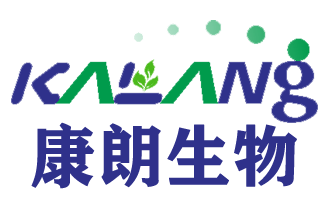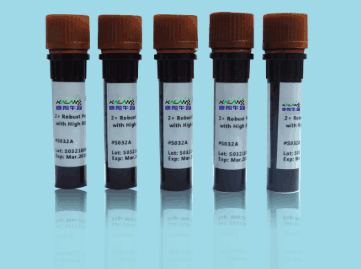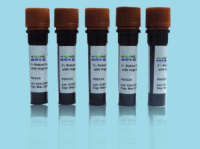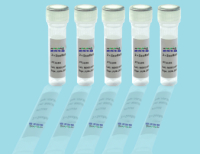

客服电话:021-61998208


Anti periostin mouse monoclonal antibody
Anti periostin mouse monoclonal antibody
应用:Elisa:1~1000-5000;WB:1:1000~4000,IHC:1:50~100
产品名(Product Name)
Anti periostin mouse monoclonal antibody
货号(Catalog No.)
KL-10029Mo
种类(Category)
Primary antibody
宿主(Host)
Mouse
反应种属(Species specificity)
Homo sapiens (Human)
应用实验(Tested applications)
Elisa,WB,IHC
克隆性(Clonality)
Monoclonal
克隆编号(Clone No.)
33-H-4
偶连物(Conjugation)
Unconjugate
免疫原(Immunogen)
Recombinant protein of full length human periostin
别名
PN, Osteoblast-specific factor 2, OSF-2
Uniprot ID
Q15063
状态(Form)
Liquid
储存溶液(Buffer)
PBS, pH7.4, containing 0.05% proclin300, 50% glycerol.
存放条件(Storage)
Use a manual defrost freezer and avoid repeated freeze thaw cycles.
Store at 4 °C for frequent use.
Store at -20 to -80 °C for twelve months from the date of receipt.
浓度(Concentration)
1mg/ml
亚型(Isotype)
IgG 1
分子量(MW)
94 kDa
纯化方式(Purity)
Protein G purified from mice ascites
产品背景:Induces cell attachment and spreading and plays a role in cell adhesion. Enhances incorporation of BMP1 in the fibronectin matrix of connective tissues, and subsequent proteolytic activation of lysyl oxidase LOX. Periostin is a secreted extracellular matrix protein that was originally identified in cells from the mesenchymal lineage (osteoblasts, osteoblast-derived cells, the periodontal ligament, and periosteum). It has been associated with the epithelial-mesenchymal transition in cancer and with the differentiation of mesenchyme in the developing heart. This protein shares a homology with fasciclin I, a secreted cell adhesion molecule found in insects.In many cancers, periostin binds to integrins on cancer cells, activating the Akt/PKB- and FAK-mediated signaling pathways. This leads to increased cell survival, invasion, angiogenesis, metastasis, and the epithelial-mesenchymal transition.In humans and mice, periostin undergoes alternative splicing in its C-terminal region, resulting in specific isoforms that can be observed in a broad range of cancers such as pancreatic, colon, and breast cancer.While periostin plays a wide variety of roles in tissue development along with disease, its function in tissue remodeling as a response to injury is a common underlying role in these different mechanisms. Periostin is transiently upregulated during cell fate changes, whether they are related to alterations in physiology or to pathological changes. It influences extracellular matrix restructuring, tissue remodeling, and the epithelial-mesenchymal transition, all of which can be related to tissue healing, development, and disease. Thus, it functions as a mediator, balancing appropriate and inappropriate responses to tissue damage.
特别提示:本公司的所有产品仅可用于科研实验,严禁用于临床医疗及其他非科研用途!








